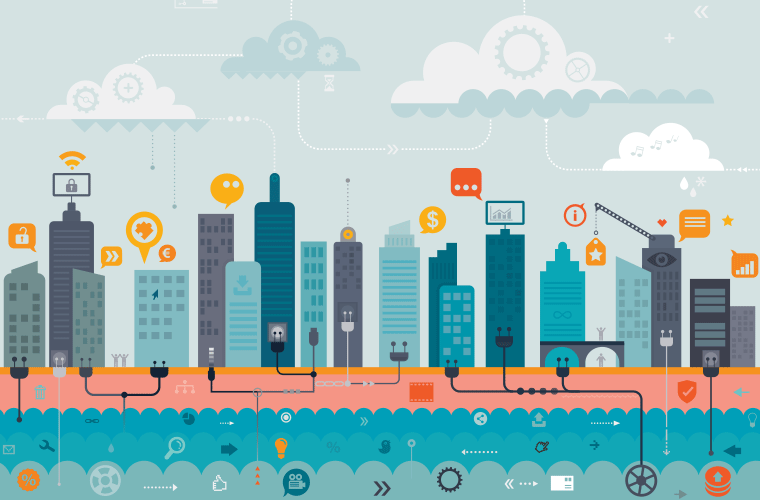H.E. Williams, Inc. has been a traditional hard goods manufacturer for close to 100 years. “Turning sheet steel and aluminum into these nice, highly finished lighting products,” says Randy Jones, Engineering Manager at Williams.
But for years, Williams has also been putting various types of control devices — whether a power supply or occupancy sensor—into fixtures, as a way to bring controllability to the space and create additional energy savings. That was good for the time being, but their engineers and product developers also saw the next big innovation coming down the pike: how power over ethernet and lighting could peacefully coexist.
“The reason we’ve jumped on this train with PoE is because it’s low voltage. LED is low voltage by its nature, and DC, so it’s kind of a natural fit electrically. Plus, the push for smart buildings–that drumbeat is getting louder and louder.”
While connected lighting has been around for a long time, with various control companies engaged in connectivity, the difference now is that all of these products are built around the IoT. That really is the key piece, the accessibility or openness of the platforms on which these systems are built.
“All these systems are already using software,” says Jones. “Taking that next step in making sure the software works really well together, through these open APIs, this is what really unleashes the data and makes it a smart building.”
Through the use of the APIs (application programming interfaces) – which, in general terms, establish clearly defined methods of communication between various software components – developers can customize applications to make them more suitable to the specific building and the desired outcomes they’re seeking. The proof is in the data.
Energy code compliance is a good example of the type of data that can be extracted and analyzed from a smart building. Lighting is a significant part of that. Most of the analysis on the back end is outsourced to specialists who do it across a wide range of commercial and industrial sectors. Eventually, Jones theorizes, metrics can be developed around more nuanced, but equally important, factors like productivity in the work environments, concentration and test performance in schools, even comfort levels and sense of well-being in healthcare facilities. The largest growth sector for PoE lies in large-scale commercial settings. Ironically, it was probably driven by residential early adopters.
“Most people have some kind of smart device in their homes,” says Jones. “So there’s a level of familiarity there. People are beginning to ask, why don’t we have this in our business?”
The reassuring news for distributors and contractors who have reservations, or remain somewhat confused over who does what in the process of installing PoE lighting, is that the infrastructure is highly standardized: the lighting is simply piggybacking off of the cabling backbone. And the original investment can also be less costly.
“Properly planned out, it can be less costly going in because you’re eliminating sensors,” adds Jones. “If you’re connecting multiple systems to one sensor, same cable tray, you can go in at a lower initial cost plus have data available to squeeze energy savings.”
When your lighting becomes a data source, the possibilities are limitless.
Tagged with lightED, manufacturer, PoE